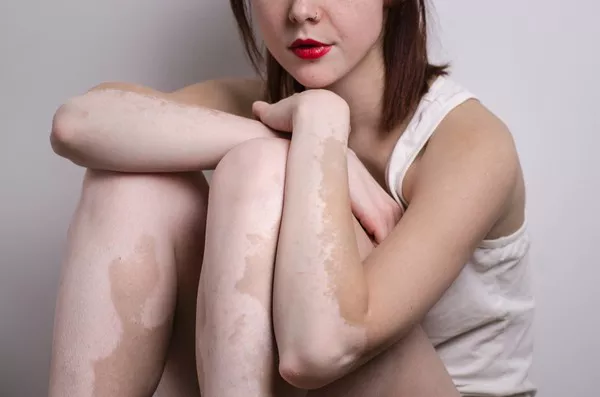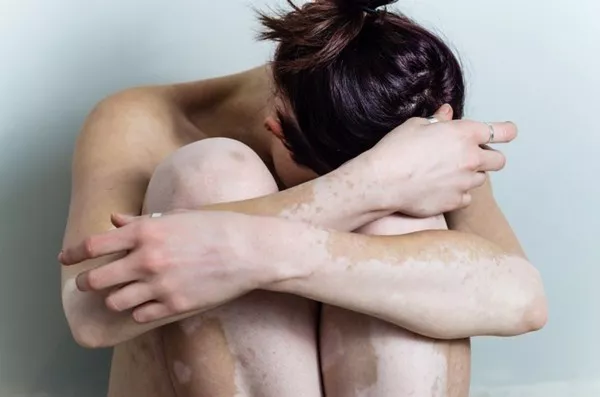Vitiligo is a chronic skin condition characterized by the loss of pigment, resulting in white patches on various parts of the body. When this depigmentation occurs on the lips, it is referred to as lip vitiligo or oral vitiligo. This condition can be particularly distressing due to the prominent visibility of the lips, often leading to significant psychological and social impacts. Understanding lip vitiligo involves exploring its causes, symptoms, diagnosis, treatment options, and coping strategies.
Causes of Lip Vitiligo
The exact cause of vitiligo, including lip vitiligo, remains unknown. However, several factors are believed to contribute to its development:
1. Autoimmune Response: The most widely accepted theory is that vitiligo is an autoimmune disorder. In this scenario, the body’s immune system mistakenly attacks and destroys melanocytes, the cells responsible for producing melanin, the pigment that gives skin its color.
2. Genetic Factors: There is evidence to suggest that vitiligo may run in families, indicating a genetic predisposition. Certain genes have been associated with the development of vitiligo, although the precise genetic mechanisms are still under investigation.
3. Environmental Triggers: Environmental factors such as stress, exposure to certain chemicals, or skin trauma may trigger or exacerbate vitiligo in individuals who are genetically predisposed.
4. Neurogenic Factors: Some researchers propose that a neurogenic mechanism, involving the release of toxic substances from nerve endings in the skin, may play a role in the destruction of melanocytes.
5. Oxidative Stress: An imbalance between the production of reactive oxygen species (free radicals) and the body’s ability to counteract their harmful effects may contribute to the onset and progression of vitiligo.
Symptoms of Lip Vitiligo
Lip vitiligo is characterized by the appearance of white or depigmented patches on the lips. These patches can vary in size and shape and may be more noticeable in individuals with darker skin tones. The condition can manifest in different ways:
1. Focal Vitiligo: Depigmentation is limited to a few areas, such as one or both lips.
2. Segmental Vitiligo: Depigmented patches appear on one side of the body, often following a segmental or dermatomal distribution. This type is more common in children and tends to stabilize after a few years.
3. Generalized Vitiligo: Depigmented patches appear symmetrically on both sides of the body, often including the lips. This is the most common type of vitiligo.
4. Mucosal Vitiligo: This type affects the mucous membranes, such as the lips and the inside of the mouth.
In addition to the cosmetic concerns, individuals with lip vitiligo may experience sensitivity to the sun due to the lack of melanin, which normally provides some protection against UV radiation.
Diagnosis of Lip Vitiligo
Diagnosing lip vitiligo involves a thorough medical history and physical examination by a dermatologist. The diagnosis is primarily clinical, based on the appearance of the depigmented patches. However, additional tests may be performed to confirm the diagnosis and rule out other conditions:
1. Wood’s Lamp Examination: This involves using a special ultraviolet light that causes areas of vitiligo to fluoresce, making them more visible, especially on lighter skin.
2. Biopsy: In some cases, a small sample of skin may be taken for microscopic examination to confirm the absence of melanocytes and rule out other causes of depigmentation.
3. Blood Tests: Blood tests may be conducted to check for associated autoimmune conditions, such as thyroid disorders, which are more common in individuals with vitiligo.
Treatment Options for Lip Vitiligo
While there is no cure for vitiligo, several treatment options can help restore skin color and manage the condition. The choice of treatment depends on the extent of depigmentation, the patient’s preferences, and the response to previous treatments. Common approaches include:
Topical Treatments:
- Corticosteroids: Topical corticosteroids can help reduce inflammation and promote repigmentation. They are most effective in the early stages of vitiligo.
- Calcineurin Inhibitors: Topical tacrolimus or pimecrolimus can be used as alternatives to corticosteroids, particularly in sensitive areas like the lips.
Phototherapy:
- Narrowband UVB Therapy: This involves exposing the skin to narrowband ultraviolet B light, which can stimulate repigmentation. It is often combined with topical treatments for better results.
- PUVA Therapy: This combines psoralen (a photosensitizing agent) with UVA light exposure. It is less commonly used due to potential side effects.
SEE ALSO: What is Vitiligo Surgery?
Laser Therapy:
- Excimer Laser: This type of laser emits a concentrated beam of UVB light, targeting specific areas of depigmentation. It can be effective for localized vitiligo.
Surgical Options:
- Skin Grafting: Involves transplanting small sections of healthy, pigmented skin to areas of depigmentation. This is usually considered for stable, localized vitiligo.
- Micropigmentation: Also known as medical tattooing, this technique involves implanting pigment into the skin. It can be used to camouflage small patches of vitiligo on the lips.
- Depigmentation: For individuals with widespread vitiligo, depigmentation of the remaining pigmented skin may be an option to achieve a more uniform skin tone. This involves using topical agents such as monobenzone to lighten the skin.
- Camouflage: Cosmetic products, such as makeup and concealers, can effectively cover depigmented patches and improve the appearance of the lips.
Coping Strategies for Lip Vitiligo
Living with lip vitiligo can be challenging, but several strategies can help individuals cope with the condition:
1. Education and Support: Learning about vitiligo and connecting with support groups can provide valuable information and emotional support.
2. Sun Protection: Using sunscreen with a high SPF on the lips and avoiding excessive sun exposure can prevent sunburn and further depigmentation.
3. Healthy Lifestyle: Maintaining a healthy diet, regular exercise, and managing stress can positively impact overall well-being and potentially reduce the progression of vitiligo.
4. Counseling: Seeking counseling or therapy can help individuals deal with the emotional and psychological impact of vitiligo, boosting self-esteem and improving mental health.
5. Regular Follow-ups: Regular visits to a dermatologist can help monitor the condition, evaluate the effectiveness of treatments, and make necessary adjustments.
Conclusion
Lip vitiligo is a form of vitiligo that affects the lips, leading to depigmented patches that can have significant cosmetic and psychological impacts. While the exact cause of vitiligo remains unknown, several factors, including autoimmune responses, genetic predisposition, and environmental triggers, are believed to play a role. Diagnosing lip vitiligo involves a thorough examination and may include additional tests to rule out other conditions.
Various treatment options are available to manage lip vitiligo, ranging from topical treatments and phototherapy to surgical options and cosmetic camouflage. Coping strategies, including education, support, sun protection, a healthy lifestyle, and counseling, can help individuals manage the condition and maintain their quality of life. While there is no cure for vitiligo, ongoing research continues to explore new treatments and potential cures, offering hope for those affected by this challenging condition.
Related Topics:

























